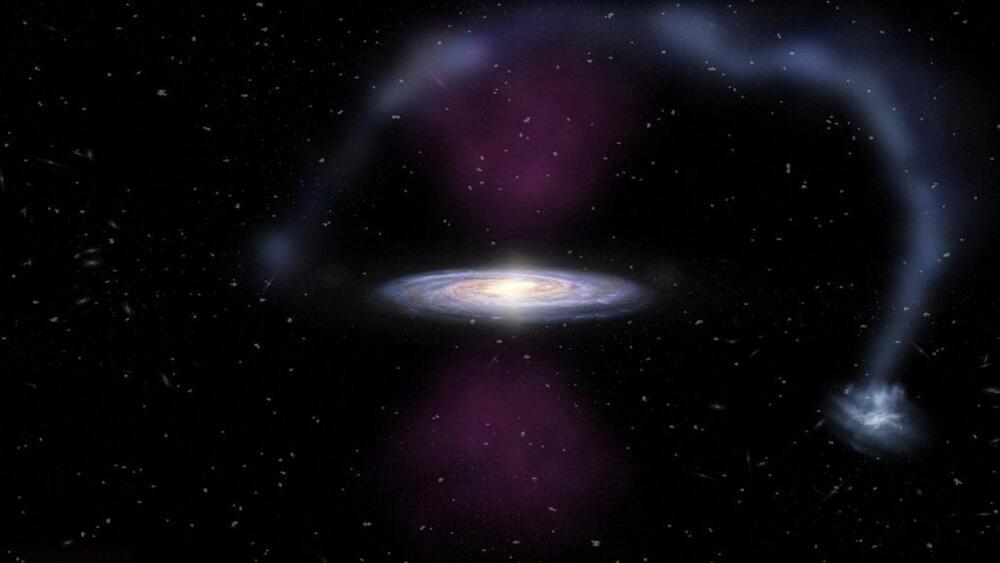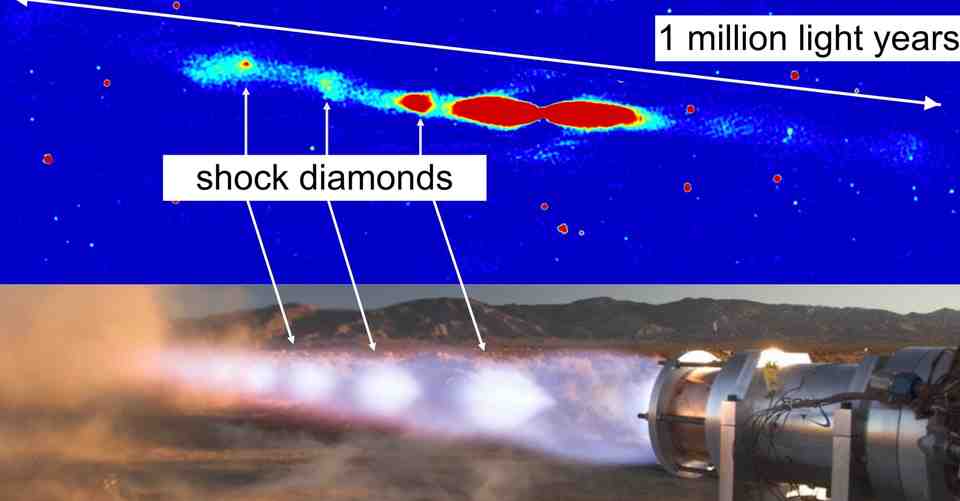Our own Milky Way has a relatively calm center, but this wasn’t always the case — just a few million years ago, the galaxy’s black hole flared briefly.


PBS Member Stations rely on viewers like you. To support your local station, go to: http://to.pbs.org/DonateSPACE
↓ More info below ↓
The Nobel prize in physics this year went to black holes. Generally speaking. Specifically, it was shared by the astronomers who revealed to us the Milky Way’s central black hole and by Roger Penrose, who proved that in general relativity, every black hole contains a place of infinite gravity — a singularity. But the true impact of Penrose’s singularity theorem would is much deeper — it leads us to the limits Einstein’s great theory and to the origin of the universe.
Sign Up on Patreon to get access to the Space Time Discord!
https://www.patreon.com/pbsspacetime.
Check out the Space Time Merch Store.
https://pbsspacetime.com/
Sign up for the mailing list to get episode notifications and hear special announcements!
https://mailchi.mp/1a6eb8f2717d/spacetime.
Hosted by Matt O’Dowd.
Lecture from the mini-series “Cosmology & Quantum Foundations” from the “Philosophy of Cosmology” project. A University of Oxford and Cambridge Collaboration.
Final 2-year SALE! Go to https://NordVPN.com/sabine or use code “sabine” to get a 2-year plan plus 1 additional month with a huge discount.
Today I tell you how my opinion about dark matter has changed an why. Is modified gravity better or worse? What evidence speaks for one side or the other, and is the case really as clear-cut as many astrophysicists claim?
Support us on Patreon: https://www.patreon.com/Sabine.
#physics #space #astronomy.
0:00 Intro.
0:23 What is dark matter?
2:22 Evidence for dark matter.
5:11 Evidence against dark matter.
7:25 If not dark matter, then what?
9:43 Why we haven’t made progress.
10:37 Sponsor message.

A team of researchers at the Sorbonne University of Paris reports a new way to emulate black hole and stellar accretion disks. In their paper published in the journal Physical Review Letters, the group describes using magnetic and electric fields to create a rotating disk made of liquid metal to emulate the behavior of material surrounding black holes and stars, which leads to the development of accretion disks.
Prior research has shown that massive objects have a gravitational reach that pulls in gas, dust and other material. And since such massive objects tend to spin, the material they pull in tends to swirl around the object as it moves closer. When that happens, gravity exerted by materials in the swirling mass tends to coalesce, resulting in an accretion disk. Astrophysicists have been studying the dynamics of accretion disks for many years but have not been able to figure out how angular momentum is transferred from the inner parts of a given accretion disk to its outer parts as material in the disk moves ever closer to the central object.
Methods used to study accretion disks have involved the development of math formulas, computer simulations and real-world models using liquids that swirl like eddies. None of the approaches has proven suitable, however, which has led researchers to look for new models. In this new effort, the researchers developed a method to generate an accretion disk made of liquid metal bits spinning in the air.
Why was NASA’s Artemis launch date rescheduled for 3 Sep 22? Get the real skinny here.
Why was NASA’s Artemis Iaunch date rescheduled for 3 Sep 22? Get the real skinny here.
Worm-hole generators by the pound mass: https://greengregs.com/
For gardening in your Lunar habitat Galactic Gregs has teamed up with True Leaf Market to bring you a great selection of seed for your planting. Check it out: http://www.pntrac.com/t/TUJGRklGSkJGTU1IS0hCRkpIRk1K
Awesome deals for long term food supplies for those long missions to deep space (or prepping in case your spaceship crashes: See the Special Deals at My Patriot Supply: www.PrepWithGreg.com.


Luke barnes, lecturer in physics, western sydney university miroslav filipovic, professor, western sydney university ray norris, professor, school of science, western sydney university velibor velović, phd candidate, western sydney university.
Astronomers at Western Sydney University have discovered one of the biggest black hole jets in the sky.
Spanning more than a million light years from end to end, the jet shoots away from a black hole with enormous energy, and at almost the speed of light. But in the vast expanses of space between galaxies, it doesn’t always get its own way.
When astronomers use radio telescopes to gaze into the night sky, they typically see elliptical-shaped galaxies, with twin jets blasting from either side of their central supermassive black hole. But every once in a while—less than 10% of the time—astronomers might spot something special and rare: An X-shaped radio galaxy, with four jets extending far into space.
Although these mysterious X-shaped radio galaxies have confounded astrophysicists for two decades, a new Northwestern University study sheds new insight into how they form—and its surprisingly simple. The study also found that X-shaped radio galaxies might be more common than previously thought.
The study will be published on Aug. 29 in The Astrophysical Journal Letters. It marks the first large-scale galaxy accretion simulation that tracks the galactic gas far from the supermassive black hole all the way toward it.
What is the real reason the NASA Artemis I Launch got scrubbed on 29 Aug 21? NASA made a valiant attempt to launch the SLS Artemis I Moon Rocket this morning, but it was not to be. The launch was scrubbed. Get the real skinny here.
Worm-hole generators by the pound mass: https://greengregs.com/
For gardening in your Lunar habitat Galactic Gregs has teamed up with True Leaf Market to bring you a great selection of seed for your planting. Check it out: http://www.pntrac.com/t/TUJGRklGSkJGTU1IS0hCRkpIRk1K
Awesome deals for long term food supplies for those long missions to deep space (or prepping in case your spaceship crashes: See the Special Deals at My Patriot Supply: www.PrepWithGreg.com.